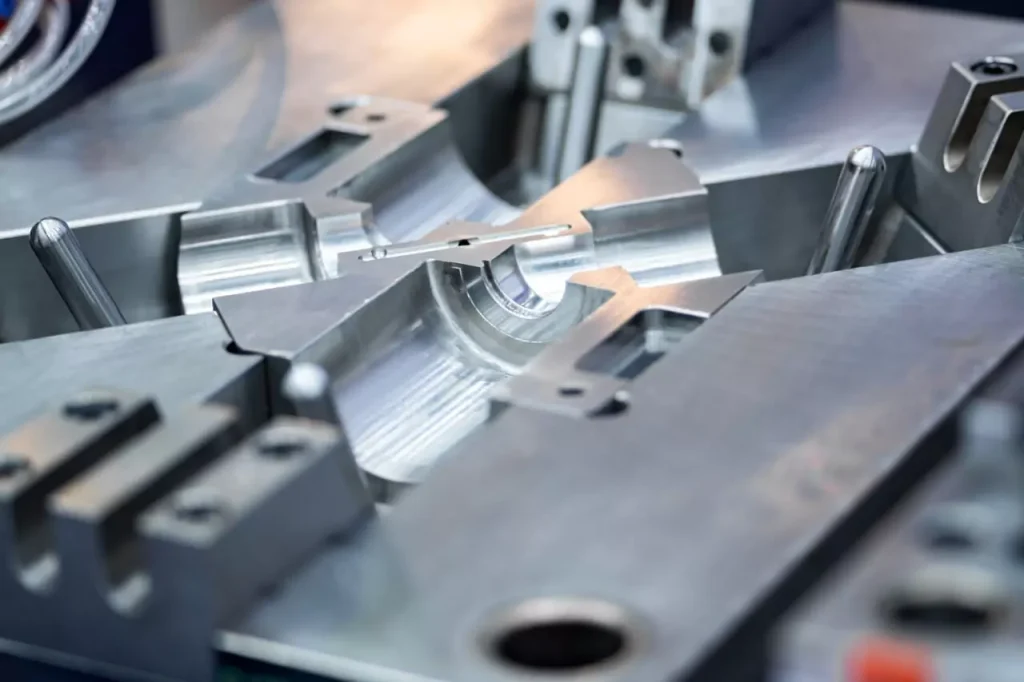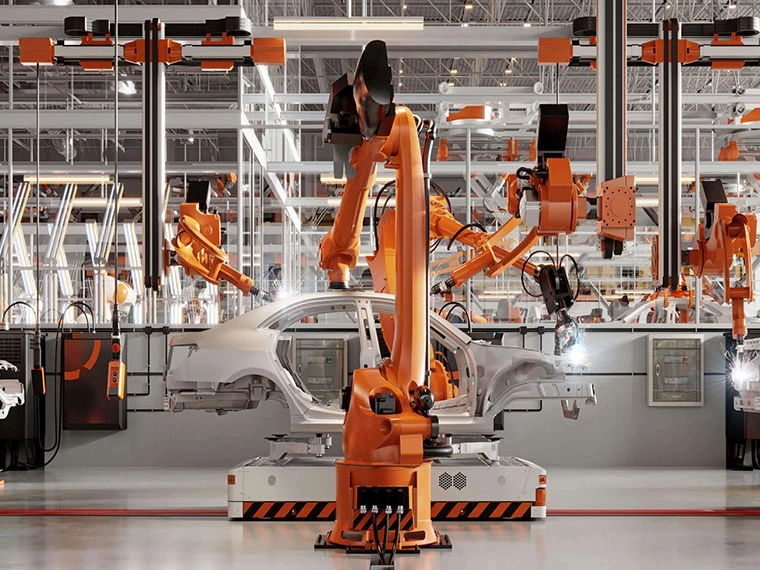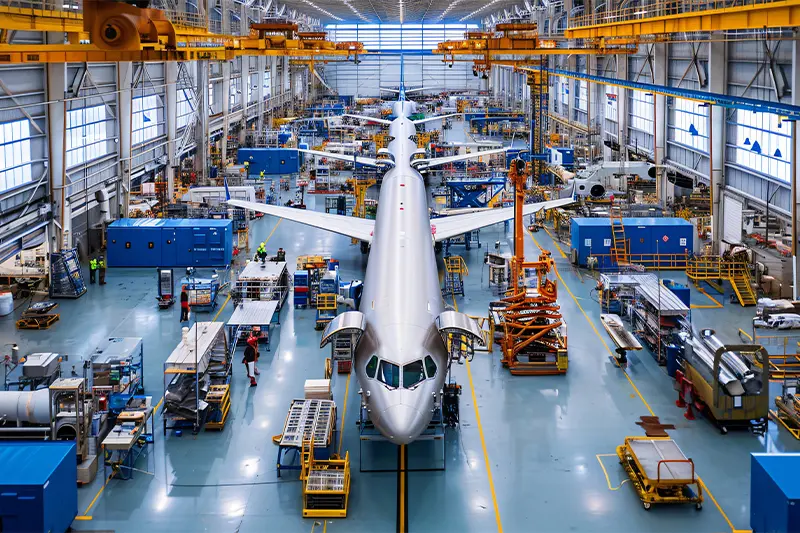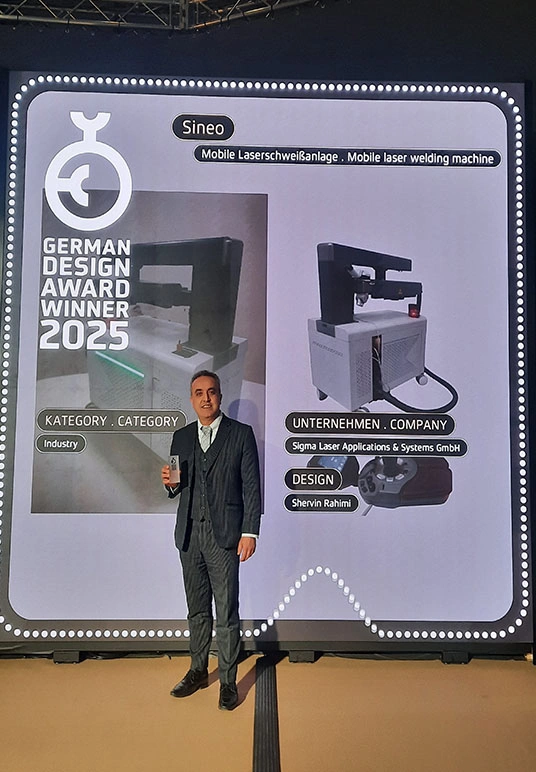










Sigma Laser GmbH is a trusted manufacturer of high-performance laser welding systems for industrial applications. Since 2005, we have been delivering precision, innovation, and reliability to industries worldwide.
Die Sigma Laser GmbH ist ein vertrauenswürdiger Hersteller von Hochleistungs-Laserschweißsystemen für industrielle Anwendungen. Seit 2005 stehen wir weltweit für Präzision, Innovation und Zuverlässigkeit.
Discover how Sigma Laser’s modular system adapts to your needs, today and tomorrow.
In today’s fast-paced and ever-evolving manufacturing landscape, modular laser systems are no longer a luxury—they are a necessity. The shift toward modularity in laser welding technology enables businesses to stay competitive, reduce costs, and adapt quickly to new requirements. But why exactly does modularity matter?
One of the greatest benefits of a modular laser welding system is the long-term cost efficiency it offers. Instead of investing in a completely new machine every time your production needs change, modular systems allow you to simply upgrade specific components.
This targeted investment strategy saves capital and offers the ability to optimize your machine for your exact application.
Modularity directly translates into better productivity. By tailoring your flexible laser welding setup to your specific workflow, you eliminate unnecessary features and focus solely on what’s essential.
In short, modularity helps your team work smarter, not harder.
As technology continues to evolve, investing in future-proof laser solutions ensures you’re ready for the challenges ahead.
A modular laser system grows with your business, reducing the risks associated with technological obsolescence.
In manufacturing, time is money. A system that is modular is inherently easier to maintain and repair:
The result? Less downtime, fewer disruptions, and higher overall uptime for your operation.
Explore the key building blocks of Sigma Laser’s modular architecture. Each designed to deliver flexibility, efficiency, and future-ready performance.
Models: Sidanus, Sirius, Siega
These are the heart of Sigma Laser’s modular welding systems. Each base unit offers a tailored power level and form factor for various industrial environments – whether stationary, mobile, or hybrid.
Components: Z Axis, Y-Swivel, Rotary Devices
Custom motion axes and automation components enable multi-axis movement and greater precision. Rotary tables and swivel axes ensure exact positioning for complex welding paths.
Components: Swivel Optics, Telescopic Lens
Optics modules allow you to adjust focal lengths and beam paths with flexibility. Swivel optics are ideal for angled welding, while telescopic lenses provide adjustable focus for diverse material thicknesses.
Component: Swivelling Wire Feed
Modular wire feeding units support precision welding with filler materials. The swivelling mechanism provides access to difficult geometries while maintaining feed stability.
Components: Joystick Control, Magnetic Display Panel
User-friendly control systems designed to simplify operation and ensure full command over every aspect of the welding process. Magnetic displays allow flexible mounting and quick feedback during operation.
Products: Sigomatic, Sigomatic Pro, SPT (Super Pulse Technology)
Powerful software is the brain behind modular systems.
All Sigma Laser modules are designed for forward compatibility — ensuring that as your business grows or technology evolves, your system can evolve with it. Whether you’re starting with a basic configuration or building a fully automated welding cell, our modular concept ensures investment security and operational agility.
Fiber lasers are renowned for their high beam quality, energy efficiency, and low maintenance. In aerospace applications, they are ideal for welding lightweight metals such as aluminum and titanium, commonly used in aircraft structures, fuel systems, and engine components.
At Sigma Laser, flexibility is not just an option — it’s the foundation of our design philosophy. Thanks to our modular laser welding systems, each configuration can be fully tailored to meet your operational demands, spatial limitations, and industry-specific applications. Whether you require a stationary setup, a mobile welding station, or a high-powered industrial laser system, the modular approach enables seamless customization.
Ideal for: High-precision manufacturing, production lines, and controlled lab environments.
Example Configuration:
Advantages:
Ideal for: On-site repairs, maintenance jobs, and projects requiring portability
Example Configuration:
Advantages:
Ideal for: Heavy-duty applications, deep penetration welding, high-volume tasks
Example Configuration:
Advantages:
What makes Sigma Laser configurations stand out is the interchangeability and upgradeability of each component. Start small, and scale your system as your needs grow. Replace optics, add new axes, or upgrade your software — all without replacing the entire system.
Maximum Flexibility, Minimal Downtime, Future-Proof Investment
Choosing a modular laser welding system isn’t just about flexibility — it’s a strategic decision that brings both technical and economic advantages. Whether you’re upgrading from a fixed solution or investing in your first system, modularity unlocks a wide range of benefits that traditional, rigid systems simply cannot offer.
Every operation is unique — and your welding system should reflect that. With a modular system, you can choose the exact optics, axes, software, wire feeders, and accessories that suit your process. No unnecessary features, no compromises.
💡 Example: A jewelry manufacturer may need precision optics and compact design, while an automotive supplier might require robust automation and dual wire feeding systems.
Start with the essentials and expand as your production grows. A modular system allows for easy upgrades — whether it’s adding a new motion axis, integrating AI-powered software, or switching to high-power laser sources.
💡 No need to reinvest in an entirely new machine — just enhance your current system.
When maintenance is required, modularity means individual components can be quickly replaced or upgraded without interrupting the entire production line. This leads to faster serviceability and lower operational disruptions.
💡 For example, a defective optics unit can be swapped independently, without dismantling the whole machine.
While initial investment might seem comparable to fixed systems, the long-term savings in upgrades, customization, and minimized downtime make modular systems more cost-effective in the lifecycle of your equipment.
Modular laser systems are designed to integrate seamlessly with robotic arms, conveyor systems, and Industry 4.0 technologies. That means your setup is not only ready for today’s tasks, but also aligned with tomorrow’s smart factories.
Modular systems often come with intuitive interfaces, like the Sigomatic software suite and customizable control panels, making it easier to train new staff and reduce learning curves — even in high-tech environments.
Because components can be upgraded individually, modular systems contribute to lower electronic waste and sustainable practices in industrial manufacturing.
In Summary:
A modular laser welding system is not just equipment — it’s a smart platform that evolves with your business, adapts to your process, and maximizes your return on investment.
One Platform – Unlimited Use Cases
A modular laser welding system doesn’t just offer technical flexibility — it empowers businesses across various industries to achieve precision, scalability, and cost-efficiency in their specific applications. From small-scale artisans to large-scale industrial manufacturers, the benefits are tangible and transformative.

In medical applications, accuracy and cleanliness are critical. Modular systems allow integration of precision optics, clean-room-compatible enclosures, and advanced process monitoring tools — ensuring compliance with stringent regulatory standards.
Result: Reliable welds in micro-scale components like surgical instruments and implants.

In heavy industries, laser systems need to adapt to different geometries, materials, and repair tasks. Modular welding units can be equipped with rotating axes, powder feeders, and handheld modules.
Result: Faster turnaround times and reduced need for manual rework.

For automotive production lines and battery welding in EVs, speed and automation are essential. Modular systems can incorporate robotic interfaces, multi-axis movement, high-power sources, and real-time quality monitoring.
Result:Faster cycle times, repeatable welds, and seamless integration into automated lines.

Universities and research institutes benefit from systems that are flexible, easy to reconfigure, and safe for experimentation. Modular platforms support rapid prototyping, software upgrades, and multiple welding techniques in one system.
Result: A future-proof investment for technical education and innovation labs.

Highly regulated sectors like aerospace demand consistent quality, deep penetration welding, and traceability. Modular systems allow integration of high-performance optics, data logging, and remote diagnostics.
Result:Safety-critical components with maximum reliability and compliance.

Craftsmanship meets technology. With compact laser heads, low-energy modules, and ultra-precise control, modular systems are perfect for delicate materials and fine weld patterns.
Result: Minimal heat-affected zones and aesthetic perfection in visible weld seams.
Need something that doesn’t exist yet? The modular platform enables completely custom-built solutions tailored to niche industries — such as battery pack production, sensor fabrication, or luxury goods manufacturing.
Result: A laser system that fits your process — not the other way around.
In Summary:
With a modular architecture, one system can be optimized for dozens of distinct applications — providing unmatched adaptability across industries, workflows, and business sizes.
Plan Today, Expand Tomorrow – The Power of Compatibility
One of the strongest advantages of Sigma Laser’s modular concept lies in its exceptional scalability. As your business evolves and production requirements shift, you won’t be locked into a fixed configuration. Instead, you can expand your capabilities step by step – with fully compatible modules that integrate seamlessly into your existing system.
Examples: Multi-axis expansions, gantry solutions, robotic integrations
Use Case: Ideal for when your production grows from small-batch to high-throughput automation.
Advantage: Eliminates the need to invest in a completely new welding platform. Expand only what you need.
Examples: Moving from a 150W system to 300W or 600W power sources
Use Case: Required when you shift from light metal applications to deeper welds or thicker materials.
Advantage: Extend the lifespan and performance of your existing setup without a full replacement.
Examples: Add-on lenses, beam shaping modules, telescopic optics
Use Case: When your applications require higher precision or specialized geometries.
Advantage: Adapt your optics as new parts or industries are added to your production line.
Examples: Workpiece sensors, conveyors, programmable tool changers
Use Case: For scaling manual stations into semi- or fully-automated cells.
Advantage: Modular automation means less disruption and faster ROI.
Examples: Upgrading from Sigomatic to Sigomatic Pro or SPT
Use Case: As your workflow becomes more complex, or as you integrate with ERP/MES systems
Advantage: Enhanced analytics, data tracking, and control—without hardware changes.
Examples: Smart diagnostics, cloud-based monitoring, firmware updates
Use Case: For proactive maintenance and remote troubleshooting
Advantage: Keep downtime low and system health optimal with minimal manual intervention.
Choosing Sigma Laser’s modular system isn’t just a matter of convenience—it’s a strategic investment. With our ever-growing portfolio of compatible technologies, you can ensure your welding solution evolves with your goals, not against them.
Everything You Need to Know Before Going Modular
A modular laser welding system is a customizable and expandable platform that allows users to configure the system based on their specific application needs. Instead of a fixed setup, you can choose components such as laser sources, motion systems, optics, and software individually — and upgrade or replace them later as needed.
Modular systems offer flexibility, scalability, and long-term cost-efficiency. They allow for:
Yes. All Sigma Laser machines are designed with upgrade paths in mind. Whether you need to increase laser power, add new software capabilities, or integrate automation modules, your existing machine can be adapted without replacing the entire system.
Modules typically fall under these categories:
Very easy. Our systems are designed for tool-free or minimal-tool reconfiguration. Most upgrades or swaps can be done in-house by your team, or remotely supported by our technicians. In many cases, downtime can be reduced to hours, not days.
Initially, modular systems may appear slightly more expensive due to the flexibility they offer. However, they are more cost-effective long-term, as you avoid costly replacements and benefit from scalable growth. You pay for what you need now — and add later only what becomes necessary.
Yes. Modular systems allow for highly flexible layouts — whether you prefer a compact desktop setup, a mobile cart-based system, or a fully integrated production cell. Enclosures, safety modules, and interfaces can be rearranged or expanded based on space and workflow.
No. In fact, Sigma Laser systems are designed to maintain a consistent user interface and workflow across modules. Whether you’re using a basic setup or a highly advanced configuration, the control system remains intuitive and standardized. Additional training is only required for new functionalities.
A wide range of industries benefit from modular flexibility, including:
Each industry often has evolving needs — making modular systems the smart choice for continuous innovation.
Yes. That’s one of their key strengths. For example, a modular system can start as a high-precision desktop laser welder for fine workpieces and later be scaled up with more power and automation to handle bulkier materials or higher volumes.
Sigma Laser offers comprehensive technical support, including:
Our global support network ensures your system performs optimally — no matter how it evolves.
Modular systems are inherently future-ready. With integrated IoT capabilities, advanced software platforms, and connectivity options, they can be seamlessly integrated into smart factory environments. Features like real-time monitoring, predictive maintenance, and data logging make them ideal for Industry 4.0 strategies.
In most cases, we recommend using Sigma-certified modules to ensure optimal compatibility and safety. However, some third-party peripherals and devices may be supported with the right interfaces and certifications. Our engineering team can advise on compatibility during the planning phase.
Standard modules can often be shipped within 2–4 weeks. Custom configurations or high-power upgrades may take slightly longer. Our sales and support teams will always provide a clear timeline during your order and planning process.
It starts with a consultation. Our engineers will analyze your application requirements, current production environment, and future growth plans. Based on this, we’ll recommend a scalable configuration that balances performance, cost, and expansion capability.
Unlock the full potential of laser welding—designed your way. Whether you’re launching a new production line or upgrading existing systems, our modular approach adapts to your specific needs.
No compromises. No limitations. Just precision-built systems that evolve with your business.
Take the Next Step:
Build smarter. Scale faster. Operate better — with modular precision.
Start your custom journey today.













